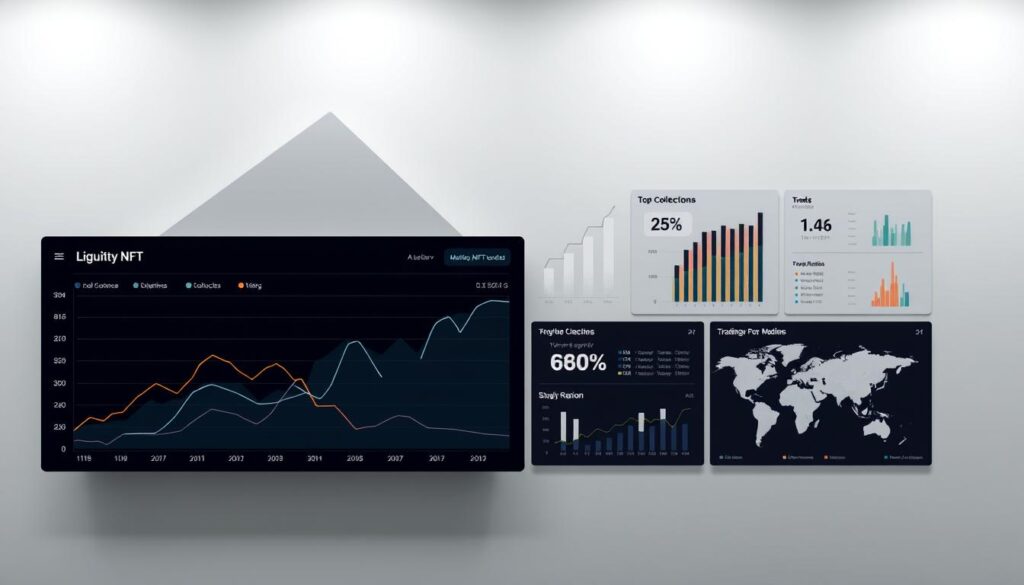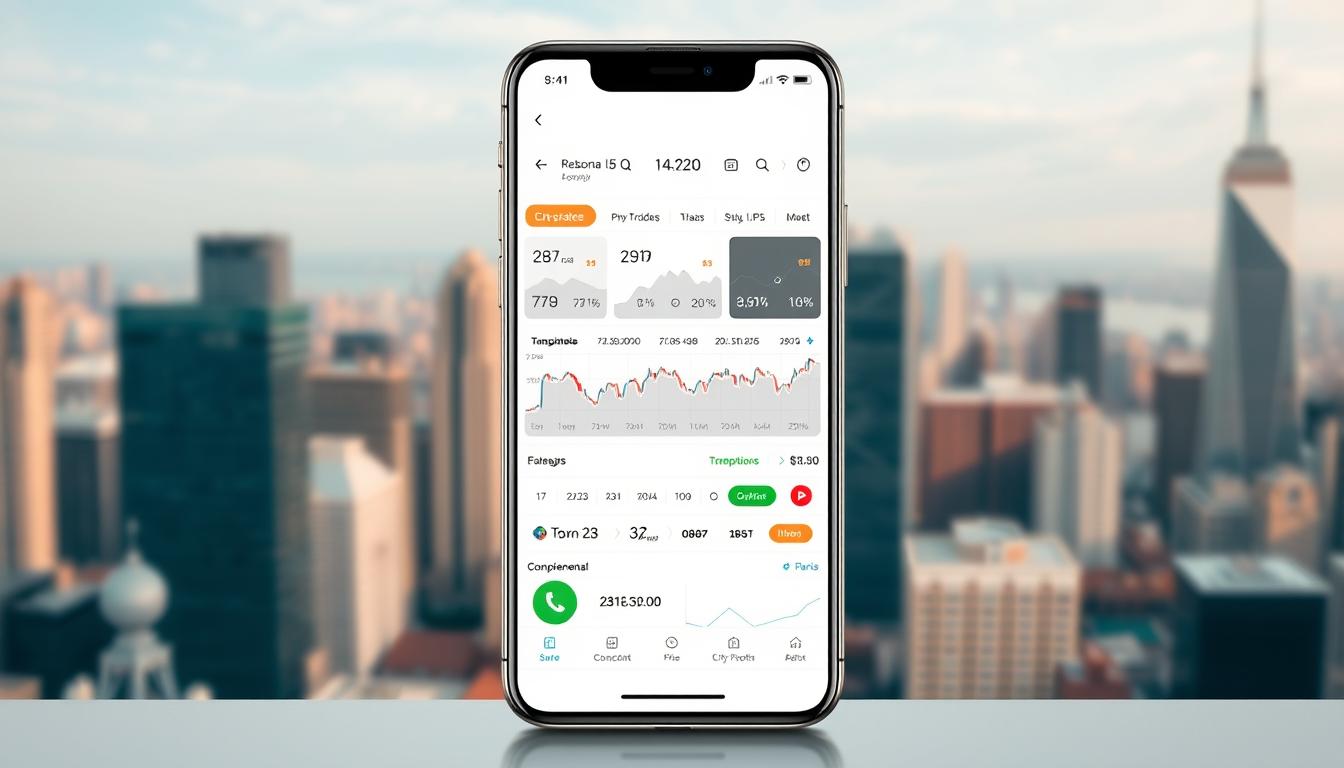Now Reading: Discover AI driven crypto arbitrage trading opportunities
- 01
Discover AI driven crypto arbitrage trading opportunities
Discover AI driven crypto arbitrage trading opportunities

Spotting tiny price gaps across exchanges can unlock real potential for skilled teams. This introduction explains the core idea: buy where an asset is cheaper and sell where it is pricier, using automated systems to close the gap fast.
Markets move in milliseconds, so speed and low latency matter. Modern platforms and stacks can scan many venues nonstop and route orders automatically. Yet costs — fees, network charges, and slippage — can wipe out gains if not handled.
Start lean: prototype with low-code tools, then scale to cloud ML and orchestration when the method proves robust. Watch for common pitfalls: thin liquidity, slow APIs, and missing failover steps that break execution.
This article will map a practical path from strategy and market evaluation to stack design and live monitoring. Expect a risk-aware, hands-on roadmap to build a compliant, low-latency arbitrage workflow that balances speed, cost, and reliability.
Key Takeaways
- Arbitrage exploits short-lived price gaps across exchanges; automation is essential for speed.
- Net results depend on fees, withdrawal costs, and slippage — factor them into every test.
- Prototype with low-code platforms, then move to custom cloud ML and orchestration for scale.
- Monitor liquidity, API performance, and failover to avoid execution risk.
- Design for 24/7 operation and maintain a clear risk-management plan.
- Past bot results are not guarantees; test and validate before committing capital.
What AI crypto arbitrage is and why speed, precision, and scale matter
Temporary mismatches in quoted prices create windows to capture tiny gains. In volatile markets, the same coin can quote different quotes on different venues for short periods. Crypto arbitrage means capturing those gaps while keeping inventory and market risk low.
The root causes are simple: latency, fragmented liquidity, and uneven participant flows. These factors produce small price differences across platforms that skilled systems can exploit.
Arbitraging price differences across exchanges
Arbitrage trading in digital assets systematically buys on one exchange and sells on another. Profits per trade are often tiny, so teams need volume and low costs. Exact top-of-book snapshots, slippage-aware sizing, and deterministic order routing are key to preserve edges.
Why human execution lags and bots excel
Manual monitoring and entry cannot match millisecond reaction times. Bots use colocated gateways, optimized APIs, and parallel pipelines to cut latency. An effective arbitrage bot also honors rate limits, manages partial fills, and filters noise so only real spreads trigger a trade.
- Measure your platform speed budget (ingest → decide → place) against target holding time.
- Balance cost versus latency: faster systems often cost more to build and run.
- Scale monitoring across many pairs to increase the chance of finding valid spreads.
AI driven crypto arbitrage trading opportunities
Detecting fleeting price gaps requires a live feed that cleans and aligns market quotes fast.
Identifying temporary price discrepancies across multiple exchanges
Stream quotes, order books, and trade prints through event-driven pipelines like AWS Kinesis, Pub/Sub, or Kafka. Normalize timestamps and fields so every venue uses a single schema for symbol, side, price, and size.
Engineer features such as spread size versus volatility, depth imbalance, recent fills, and latency-adjusted top-of-book gaps. Backtest signal logic on historical tick data to measure false positives and avoid overfitting.
From signal to execution: shrinking time-to-trade
Minimize stages: colocate inference and execution, batch API calls, and apply priority queues when multiple signals compete. Include cross-venue health checks to confirm both legs are executable under current rate limits and maintenance windows.
- Incorporate dynamic fee schedules and expected slippage into signal thresholds to estimate net edge.
- Synchronize clocks with NTP/PTP and use consistent timestamps to prevent phantom spreads.
- Maintain per-venue playbooks for ticks, lot sizes, and partial fills; monitor decay rates to adapt holding time.
How to evaluate market conditions, spreads, and trading fees before you act
Before executing a cross-venue move, quantify every cost that can erase a small profit. Convert visible quote gaps into a net estimate that factors real costs and execution risk.

Calculating true edge
Use a net-edge formula: expected spread − taker fees − maker/taker mix adjustments − estimated slippage − network or withdrawal fees. Include tiered fee schedules per account and any dynamic rebates.
Measuring liquidity and order book health
Assess depth at target size, time-to-fill, and historical partial-fill rates. Track stale updates, outlier quotes, and cancel/replace churn to spot unhealthy books across exchanges.
When volatility helps and when it hurts
Higher volatility widens spreads and can create chance for gains, but it raises slippage and execution risk. Stress-test edge calculations under noisy conditions and sample latency and jitter to estimate spread collapse probability.
- Do sensitivity analysis to see how edge changes with size and cap exposure per opportunity.
- Maintain a rolling dashboard of realized vs. expected PnL to diagnose fees and slippage.
- Trigger dynamic halts when venue instability or liquidity shocks breach risk thresholds.
Designing your AI arbitrage stack for reliability and low latency
A resilient stack starts with clear separation of fast data paths and durable control planes. Keep the hot path short so market signals reach execution with minimal hops. Use modular services to contain faults and keep latency predictable.

Data ingestion and streaming
Choose event-driven pipelines such as Kinesis, Pub/Sub, or Kafka for high-throughput feeds. These tools give you at-least-once or exactly-once semantics and resilient replay for backtests.
Pair streaming with lightweight processing (Flink, Lambda) and fast storage like DynamoDB or BigQuery to serve low-latency features to inference endpoints.
Model lifecycle and deployment
Run training, registry, and endpoints on managed platforms like SageMaker, Vertex AI, or Azure ML. Version models, track features, and monitor drift so predictions remain stable in live markets.
Workflow orchestration and integrations
Use Airflow or Prefect for scheduled retrains and event DAGs. Low-code tools speed experiments but move mature flows to robust orchestration for production safety.
Secure exchange connectivity and observability
Harden API clients with OAuth, gateways, and key rotation. Implement rate-limit handling, exponential backoff, and circuit breakers to protect execution during spikes.
- Separate ingestion, inference, execution, and reporting for fault isolation.
- Maintain schema management, feature store versioning, and audit logs for compliance.
- Capture metrics, logs, traces, and synthetic checks to keep monitoring tight.
For a practical implementation guide, see our AI cryptocurrency arbitrage guide.
Choosing your path: low-code arbitrage bot versus custom architecture
Deciding between a low-code MVP and a full custom stack shapes speed, cost, and future growth.

Low-code tools like Make, Zapier, n8n, Retool, and Dataiku let teams build an MVP fast. They connect feeds, apply basic rules, and call exchange APIs without deep engineering.
Use low-code when you need quick validation, dashboards, and tweakable rules for non-technical traders. Retool and Dataiku are great for monitoring and analytics that speed decision cycles.
When low-code limits appear
Low-code can add latency and cap customization. Complex routing, sub-millisecond decisions, and advanced risk logic often exceed these platforms.
Custom stacks for scale
Custom builds use Node.js or Python microservices in Docker containers and Kubernetes orchestration. This gives precise control over latency, failover, and multi-venue routing.
- Migrate hot paths from low-code to custom when latency targets or multi-exchange routing require it.
- Balance cost-of-delay vs. cost-of-build with business metrics before moving to full custom.
- Sandbox and paper trade in both phases to validate rules and measures safely.
Hybrid pattern: prototype in low-code, then port execution-critical services to containers or serverless modules. Keep components modular so you can swap a bot module without rewriting the whole platform.
Core arbitrage strategies and when to use them
A modular strategy engine helps match method to liquidity, fees, and latency constraints.
Exchange arbitrage means buying and selling the same asset on different venues at the same time. Focus on settlement windows, transfer limits, and lot-size rules to avoid rejected legs. Use this when depth is healthy and spreads exceed costs.

Triangular and spatial mechanics
Triangular moves cycle through three pairs to exploit cross-rate mismatches without net directional exposure. They work best on liquid pairs with low minimums.
Spatial methods compare related instruments or regions, such as spot versus futures basis. Funding rates, carry, and regional price differences drive these plays.
Statistical approaches and adaptive signals
Statistical strategies use correlations, cointegration, and machine learning models to spot mean reversion or regime shifts. Deploy these when historical relationships are stable and sample sizes are large.
- Choose exchange arbitrage for clear price gaps across multiple exchanges with fast settlement.
- Use triangular when cross rates and lot sizes allow multi-leg atomic execution.
- Prefer spatial for basis and funding-rate plays where carry is predictable.
Risk notes: watch borrow availability, chain congestion, and minimum notionals. Build per-strategy KPIs (win rate, average edge, latency to fill) and let the stack route capital to higher-Sharpe modules.
Backtest with realistic slippage and fee models before promoting any strategy into production.
| Strategy | Best when | Key risk |
|---|---|---|
| Exchange | Deep books, low fees | Settlement delay |
| Triangular | Consistent cross rates | Execution rejections |
| Statistical | Stable correlations | Model drift |
Execution mechanics: accounts, routing, and millisecond decisions
Execution depends on tight coordination between accounts, order routers, and sub-second decision loops.
Start with account setup per venue. Complete KYC, create scoped API keys, and enable withdrawal whitelists. Segregate permissions so execution keys cannot withdraw funds.
Account balances and pre-positioning
Pre-position balances to avoid on-chain transfers that cost time and fees. Keep reserve buffers by asset and region to cover failed legs.
Smart routing and order behavior
Route orders to venues using depth, latency, and fee models. Handle partial fills with retries and size decay logic to limit exposure.
- Budget latency per step: signal, route, sign, submit.
- Use limit, IOC, and post-only orders to control slippage and fee profile.
Failover, reconciliation, and monitoring
Detect degraded venues with health checks and trip circuit breakers when fill rates or error rates rise. Reconcile fills, fees, and PnL after each cycle.
Observability via CloudWatch, Prometheus, or Grafana should track queue lengths, fill ratios, and error spikes. Alerts must separate transient faults from critical outages.
| Order Type | Purpose | When to use |
|---|---|---|
| Limit | Control price and reduce taker fees | When book depth is stable and latency is low |
| IOC (Immediate-Or-Cancel) | Capture instant liquidity, allow partial fills | For fast cross-venue legs with low tolerance for delay |
| Post-only | Ensure maker fee or rebates | When priority is fee control over immediate fill |
Audit logs must record every decision, order message, and error. Rate-limit handling and sequencing prevent throttling during bursts and reduce execution risk.
Risk management, compliance, and cost control in arbitrage trading
Protecting capital starts with clear rules that limit how much you can lose on a single play. A policy-based risk management framework sets per-trade caps, per-venue exposure limits, and net position ceilings.
Stop-loss and time-stop logic prevent runaway positions when a leg fails or spreads collapse. Maintain reserve buffers for fees, slippage, and emergency unwinds to avoid forced liquidations.
Track the complete cost stack: taker/maker trading fees, withdrawal and network fees, and any transfer charges. Include these costs in opportunity thresholds and in PnL attribution to keep results honest.
Security, audit, and privacy
Enforce least-privilege access, HSM/KMS-backed key rotation, and encryption in transit and at rest. Log every decision and order in append-only audit trails to meet internal and regulatory reviews.
- Run threat models and pentests on critical paths like order submission and key storage.
- Implement incident runbooks with SLAs for containment and post-mortems.
- Address CCPA/GDPR via data minimization, consent flows, and subject-request handling.
| Control | Purpose | When to trigger |
|---|---|---|
| Exposure caps | Limit per-trade and per-venue loss | On portfolio rebalancing or market stress |
| Reserve buffers | Cover fees and emergency unwinds | During high volatility or chain congestion |
| Audit logs | Immutable record for compliance | Continuous; reviewed after incidents |
Operating at scale: 24/7 monitoring, continuous learning, and optimization
A production-grade stack blends 24/7 observability with automated model refresh and failure-safe routing.
Monitor system health and model signals continuously. Dashboards and alerts must cover latency, fill times, error budgets, and realized edge decay. Set separate alerts for execution KPIs and model performance so teams act fast.
Detect drift by testing feature and prediction distributions. When tests fail, trigger retraining pipelines orchestrated with Airflow or Kubeflow. Validate new models via canary or shadow deployments before full promotion.
Scale and resilience
Design for horizontal scaling with Kubernetes, Auto Scaling groups, or Cloud Run. Use stateless services, regional replicas, and automated failover to keep core paths live during market surges.
Optimize costs with spot/preemptible VMs and serverless inference, balancing savings with reliability needs. Use feature flags to roll out strategy changes safely under supervision.
- Keep graceful degradation modes for noncritical features during spikes.
- Record business-impact metrics: fill times, edge decay, and post-trade PnL.
- Feed post-trade analytics back into features and routing logic for continuous learning.
| Area | Primary Tools | Goal | When to trigger |
|---|---|---|---|
| Monitoring | Grafana, CloudWatch, Prometheus | Detect faults & performance drops | Latency > threshold or error spike |
| Retraining | Airflow, Kubeflow, AutoML | Fix model drift | Stat test failure or degraded PnL |
| Scaling | Kubernetes, Auto Scaling, Cloud Run | Maintain throughput under load | Throughput or CPU limits breached |
| Cost | Spot VMs, serverless endpoints | Reduce run costs safely | Stable workloads with fallback paths |
For a practical guide to maximizing system-level profits and safe model rollout, review this implementation guide.
Your next steps to capitalize on AI arbitrage with confidence
,Begin by mapping which assets and venues show consistent, testable price differences across your target markets.
Stand up a minimal ingestion pipeline and a simple dashboard to visualize spreads before you build complex logic. Prototype decision rules in a low-code tool or notebook, then move latency-critical steps into services for reliable execution.
Use paper trading to confirm fees, slippage, and edge calculations. Prioritize security from day one with key management, least-privilege access, and immutable audit logs.
Codify risk limits, stop-loss/time-stop rules, and venue health checks before deploying capital. Roll out in phases, scale only when monitoring shows stable behavior, and keep a continuous loop for retraining and A/B testing.
The potential is real, but disciplined processes, the right tools, and strong controls make the difference for traders seeking arbitrage opportunities across multiple exchanges and crypto exchanges.














